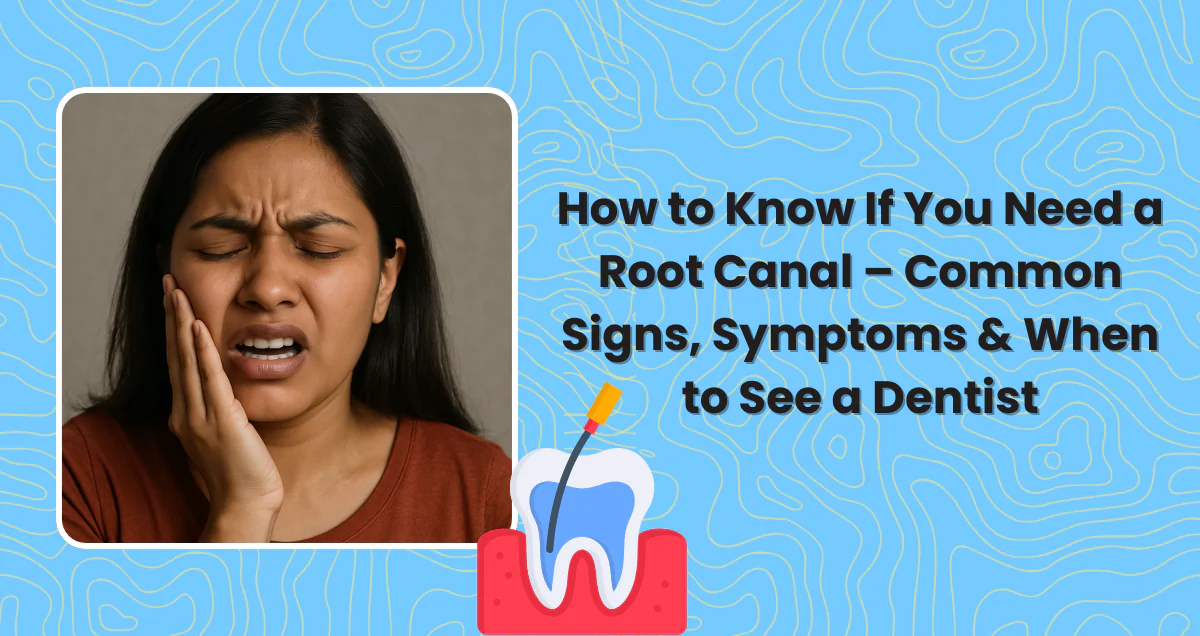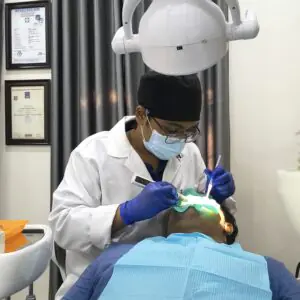
How to Know If You Need a Root Canal – Common Signs, Symptoms & When to See a Dentist
Root canal treatment is one of the most effective ways to relieve tooth pain and save a badly damaged or infected tooth. If you’re suffering from deep decay, dental trauma, or a cracked filling, you generally have two choices: extract the tooth or save it with a root canal.
In a root canal procedure, the infected or inflamed nerve tissue (pulp) inside the tooth is carefully removed. The root canals are then cleaned, disinfected, and sealed with a biocompatible filling material to prevent future infection. Finally, the tooth is restored—usually with a crown—to preserve function and aesthetics.
Thanks to modern dentistry and local anesthesia, root canal treatments are now virtually painless and highly successful. If you’re experiencing persistent tooth pain, sensitivity, or swelling, root canal therapy may be the solution that lets you keep your natural tooth pain-free.

https://drive.google.com/file/d/1Ok0D1QVRGZSnD5VK9Hewh5hJpc40z5If/view?usp=sharing
What Is a Root Canal Treatment?
A root canal is a dental procedure where the infected nerve tissue from inside a tooth is removed. The root canal spaces are cleaned, disinfected, and sealed with a root filling material. In most cases, the tooth is then covered with a crown to protect it and restore its strength.
Is a Root Canal Painful?
No. The procedure is done under local anesthesia, which completely numbs the area. Root canal treatment is performed to relieve pain, not cause it.
How Many Appointments Are Required?
Most root canal treatments can be completed in 1 to 3 appointments, depending on the severity of the infection and the complexity of the case. In teeth with pus discharge or chronic infection, medication may be placed inside the canal before sealing it.
Common Signs You Might Need a Root Canal
1. Persistent Tooth Pain
Ongoing tooth pain, especially while lying down or sleeping, could indicate nerve inflammation or infection.
2. Sensitivity to Hot and Cold
Lingering pain after consuming hot or cold foods or beverages may point to irreversible pulp damage.
3. Swollen or Tender Gums
A gum boil, swelling, or tenderness near a specific tooth often suggests an abscess or pus accumulation.
4. Tooth Discoloration
A tooth that appears dark or gray—especially after trauma—can indicate that the nerve has died.
5. Pain While Chewing or Biting
Sharp pain when chewing or putting pressure on a tooth might mean there’s infection at the root tip (periapical lesion).
6. Chipped or Cracked Tooth
Cracks or fractures can expose the inner nerve tissue, making root canal treatment necessary—especially in front teeth.
7. Deep Decay or Visible Dark Spots
Large cavities that reach the nerve chamber often require root canal therapy to save the tooth.
Diagnosis – How Dentists Confirm the Need for a Root Canal
Your dentist will perform a thorough clinical examination and take digital X-rays to check for:
- Deep cavities
- Pus formation or abscesses
- Changes in the bone near the tooth root
- Fractures or trauma
Pulp vitality tests may also be done to evaluate the health of the nerve inside the tooth.
Why You Shouldn’t Delay Treatment
Delaying root canal treatment can lead to serious consequences:
- The infection can worsen, forming an abscess or spreading to surrounding teeth and bone.
- The tooth structure may become too weak to restore, increasing the risk of tooth loss.
- Jawbone damage can occur, leading to more complex and expensive treatments later on.
Prompt treatment means better prognosis, less pain, and lower cost.
What to Expect During the Procedure
Here’s what typically happens during a root canal at our Kolkata dental clinic:
- Numbing the tooth with local anesthesia—so the procedure is pain-free.
- Creating a small opening to access the infected pulp.
- Cleaning and shaping the canals using special instruments.
- Disinfecting and drying the space.
- Filling the canals with a biocompatible material (usually gutta-percha).
- Sealing the access with a temporary or permanent filling.
- Placing a dental crown on the tooth for long-term protection.
Why Choose City Smiles Dental Care, Baghajatin for Root Canal Treatment?
At City Smiles Dental Care in Baghajatin, Kolkata, your root canal will be performed by a specialist Endodontist, Dr. Sagnik Bhattacharya. With advanced equipment, rotary instrumentation, digital X-rays, and painless anesthesia techniques, we ensure efficient and comfortable treatment with long-lasting results.
We specialize in managing even complex cases like:
- Re-treatment of failed root canals
- Root canal for curved or calcified canals
- Painless single-sitting root canals

Convenient location, affordable pricing, and specialist care make us the preferred dental clinic in Baghajatin for root canal treatment.
Final Thoughts
In today’s world of online information, it’s easy to get overwhelmed or misled. But when it comes to dental care, always trust a qualified dentist over unverified internet advice.
If you’re experiencing any of the signs mentioned above, don’t ignore them. Getting an expert evaluation early can save your natural tooth and prevent complications.
Worried about a toothache or tooth sensitivity?
Don’t wait until it gets worse. Book a consultation with our MDS Endodontist in Baghajatin today.
📞 Call us at 6289004840
📍 Visit us: City Smiles Dental Care, Baghajatin, Kolkata
